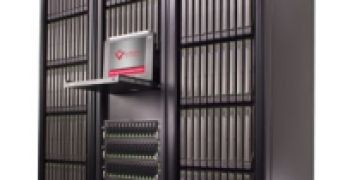The Army Research Laboratory Major Shared Resource Center (MSRC), a US Army supercomputing center with a legacy that dates to the ENIAC is buying four Linux Networx Inc Advanced Technology Clusters. Among them, a cluster with 1,122 nodes and 4,488 3.2 GHz Intel Dempsey cores. This purchase will more than double its computing capability from 36 TFLOPS (trillion floating-point operations per second) to more than 80.
The decision to move to clusters was not made quickly, said Charles J. Nietubicz, director of the MSRC. The lab started exploring the option in 2003 and began a 256-processor cluster. "We saw that cluster computing was this new kid on the block and was interesting, but the center wasn't about to start scrapping its other systems made by Silicon Graphics Inc, Sun Microsystems Inc and IBM."
Of the $9.1 billion high-performance computing market last year, clusters accounted for about half the sales. The other half was mostly SMP (symmetric multiprocessing - shared-memory) systems.
Although MSRC is not disclosing the price tag, Earl Joseph, an analyst for IDC says the average cost for a cluster is about $2,000 per processor, compared with $12,000 per processor for a RISC system.
Nietubicz added that other vendors "are going to have to begin to recognize that either they provide some other kind of performance to try to gain the increased price, or they are going to have to reduce the price to provide equivalent performance."
"The complexity and fidelity of current production DoD calculations consume terabytes of memory and tens of CPU years for a single simulation," said Jerry Clarke, Scientific Visualization Team Leader. "When you're dealing with that amount of data, every aspect of visualization must be parallel. This system will allow for the interactive analysis of important calculations currently impossible on available resources."

 14 DAY TRIAL //
14 DAY TRIAL //